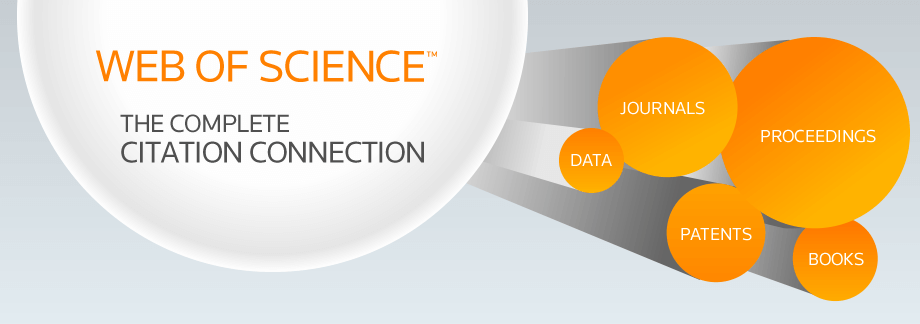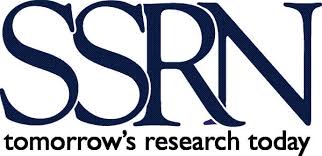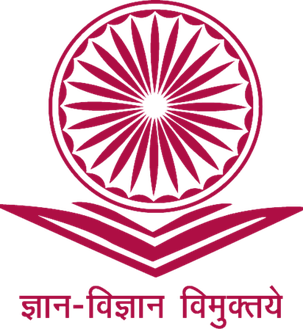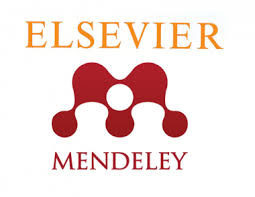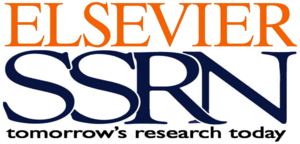INTERNATIONAL JOURNAL OF CREATIVE RESEARCH THOUGHTS - IJCRT (IJCRT.ORG)
International Peer Reviewed & Refereed Journals, Open Access Journal
IJCRT Peer-Reviewed (Refereed) Journal as Per New UGC Rules.
ISSN Approved Journal No: 2320-2882 | Impact factor: 7.97 | ESTD Year: 2013
Call For Paper - Volume 13 | Issue 11 | Month- November 2025
Scholarly open access journals, Peer-reviewed, and Refereed Journals, Impact factor 7.97 (Calculate by google scholar and Semantic Scholar | AI-Powered Research Tool) , Multidisciplinary, Monthly, Indexing in all major database & Metadata, Citation Generator, Digital Object Identifier(CrossRef DOI)
Contact Us Click Here
WhatsApp Contact Click Here
Volume 12 | Issue 11 |
| IJCRT Journal front page | IJCRT Journal Back Page |
Paper Title: Formulation and evaluation of nanoparticle incorporated anti-inflammatory ointment from the alcoholic extract of Ricinus communis leaves
Author Name(s): E.Aswathi, Ayisha Jinan, Ansitha M, Najiya Nasrin, Babu K M
Published Paper ID: - IJCRT21X0293
Register Paper ID - 271794
Publisher Journal Name: IJPUBLICATION, IJCRT
DOI Member ID: 10.6084/m9.doi.one.IJCRT21X0293 and DOI :
Author Country : Indian Author, India, 673581 , Meppadi, 673581 , | Research Area: Pharmacy All Published Paper URL: http://ijcrt.org/viewfull.php?&p_id=IJCRT21X0293 Published Paper PDF: download.php?file=IJCRT21X0293 Published Paper PDF: http://www.ijcrt.org/papers/IJCRT21X0293.pdf
Your Paper Publication Details:
Title: FORMULATION AND EVALUATION OF NANOPARTICLE INCORPORATED ANTI-INFLAMMATORY OINTMENT FROM THE ALCOHOLIC EXTRACT OF RICINUS COMMUNIS LEAVES
DOI (Digital Object Identifier) :
Pubished in Volume: 12 | Issue: 11 | Year: November 2024
Publisher Name : IJCRT | www.ijcrt.org | ISSN : 2320-2882
Subject Area: Pharmacy All
Author type: Indian Author
Pubished in Volume: 12
Issue: 11
Pages: p798-p833
Year: November 2024
Downloads: 272
E-ISSN Number: 2320-2882
Abstract
The development and assessment of nanoparticles in anti inflammatory ointments represent a significant advancement in topical therapy.This research aimed to create an anti inflammatory ointment with nanoparticles to enhance the delivery and effectiveness of the active pharmaceutical ingredient.Characterisation of the nanoparticles involved techniques like zeta potential,scanning electron microscopy which confirmed their uniform size and morphology. The ointment was formulated by integrating the nanoparticles into an appropriate ointment base,followed by through evaluation of physical properties,spreadability,viscosity and Ph. Invitro release studies indicated a sustained release profile and anti inflammatory activities. This novel formulation harnesses the benefits of nanotechnology,offering a controlled release system and enhanced skin penetration leading to better therapeutic outcome.The studies concludes that nanoparticle-infused ointments have great potential for managing inflammatory conditions effectively,necessitating further clinical investigation.
Licence: creative commons attribution 4.0
License
Keywords
Nanoparticles, Anti inflammatory,ointment,controlled release,skin permeation.
License
Paper Title: Synthesis of Zinc(II), Mercury(II), And Iron(III) Complexes, Their Characterization Techniques And Applications
Author Name(s): ROHIN KUMAR PAREWA, HIMANI YADAV, AJAY KUMAR SAINI, SHUCHI DADHEECH
Published Paper ID: - IJCRT21X0292
Register Paper ID - 271618
Publisher Journal Name: IJPUBLICATION, IJCRT
DOI Member ID: 10.6084/m9.doi.one.IJCRT21X0292 and DOI :
Author Country : Indian Author, India, 313001 , UDAIPUR, 313001 , | Research Area: Chemistry All Published Paper URL: http://ijcrt.org/viewfull.php?&p_id=IJCRT21X0292 Published Paper PDF: download.php?file=IJCRT21X0292 Published Paper PDF: http://www.ijcrt.org/papers/IJCRT21X0292.pdf
Your Paper Publication Details:
Title: SYNTHESIS OF ZINC(II), MERCURY(II), AND IRON(III) COMPLEXES, THEIR CHARACTERIZATION TECHNIQUES AND APPLICATIONS
DOI (Digital Object Identifier) :
Pubished in Volume: 12 | Issue: 11 | Year: November 2024
Publisher Name : IJCRT | www.ijcrt.org | ISSN : 2320-2882
Subject Area: Chemistry All
Author type: Indian Author
Pubished in Volume: 12
Issue: 11
Pages: p730-p797
Year: November 2024
Downloads: 306
E-ISSN Number: 2320-2882
Abstract
The synthesis and characterization of Zinc(II), Mercury(II), and Iron(III) complexes have garnered significant interest due to their diverse applications in fields such as catalysis, medicine, and materials science. This study focuses on the preparation of these metal complexes using various ligands, particularly Schiff bases, which exhibit chelating properties that enhance metal coordination. The complexes are synthesized through direct reaction methods involving metal salts and ligands in suitable solvents, followed by purification techniques such as recrystallization. Characterization of the synthesized complexes is achieved through an array of analytical techniques. UV-Visible spectroscopy provides insights into the electronic transitions and ligand field interactions, while Infrared (IR) spectroscopy elucidates the coordination modes by identifying shifts in functional group vibrations. Nuclear Magnetic Resonance (NMR) spectroscopy reveals the electronic environments of the ligands in the complexes, enhancing our understanding of their structure. Furthermore, Single-Crystal X-ray Diffraction (SCXRD) is employed to ascertain the three-dimensional arrangements of atoms, confirming the geometries and bonding environments of the complexes. The thermal stability of the complexes is evaluated using Thermogravimetric Analysis (TGA) and Differential Scanning Calorimetry (DSC), providing essential data on their thermal behavior. Additionally, Mass Spectrometry and Cyclic Voltammetry (CV) are utilized to determine molecular weights and investigate electrochemical properties, respectively. The applications of Zinc(II), Mercury(II), and Iron(III) complexes are diverse. Zinc complexes demonstrate antimicrobial properties, making them suitable for medical applications, while Mercury complexes are explored for their catalytic abilities. Iron(III) complexes are significant in various biochemical processes and serve as potential therapeutic agents. This review provides a comprehensive overview of the synthesis, structural characterization, and application potential of Zinc(II), Mercury(II), and Iron(III) complexes. By shedding light on their properties and versatile applications, this study underscores the potential of these complexes in the development of new functional materials and therapeutic agents, paving the way for future innovations in materials science and medicinal chemistry.
Licence: creative commons attribution 4.0
License
Keywords
Zinc(II) complexes, Mercury(II) complexes, Iron(III) complexes, Synthesis, Characterization, Schiff bases, Chelating properties, UV-Visible spectroscopy, Infrared (IR) spectroscopy.
License
Paper Title: A Critical Analysis On Inheritance Of Property Under Hindu Law And Muslim Law In India
Author Name(s): Prerika Wadhwa
Published Paper ID: - IJCRT21X0291
Register Paper ID - 271571
Publisher Journal Name: IJPUBLICATION, IJCRT
DOI Member ID: 10.6084/m9.doi.one.IJCRT21X0291 and DOI :
Author Country : Indian Author, India, 141001 , Ludhiana, 141001 , | Research Area: Other area not in list Published Paper URL: http://ijcrt.org/viewfull.php?&p_id=IJCRT21X0291 Published Paper PDF: download.php?file=IJCRT21X0291 Published Paper PDF: http://www.ijcrt.org/papers/IJCRT21X0291.pdf
Your Paper Publication Details:
Title: A CRITICAL ANALYSIS ON INHERITANCE OF PROPERTY UNDER HINDU LAW AND MUSLIM LAW IN INDIA
DOI (Digital Object Identifier) :
Pubished in Volume: 12 | Issue: 11 | Year: November 2024
Publisher Name : IJCRT | www.ijcrt.org | ISSN : 2320-2882
Subject Area: Other area not in list
Author type: Indian Author
Pubished in Volume: 12
Issue: 11
Pages: p633-p729
Year: November 2024
Downloads: 292
E-ISSN Number: 2320-2882
Abstract
Inheritance laws in India are deeply rooted in the country's diverse religious traditions, leading to a complex legal landscape. This Paper examines the principles of inheritance under Hindu and Muslim laws, highlighting their distinct characteristics, legal frameworks, and contemporary challenges. Inheritance laws in India, influenced by religious traditions, create a diverse and complex legal framework particularly for Hindus and Muslims. Hindu inheritance is primarily governed by the Hindu Succession Act, 1956, which applies to Hindus, Buddhists, Jains, and Sikhs. In contrast, Muslim inheritance laws are derived from the Quran, Hadith, and codified under the Muslim Personal Law. These laws emphasize fixed shares for primary heirs such as spouses, children, and parents, ensuring detailed and equitable distribution. Unlike Hindu law, Muslim law does not recognize representation, and the property is distributed strictly according to prescribed shares, preventing wealth concentration. Comparatively, Hindu law is largely statutory and has evolved with legislative amendments to promote gender equality, while Muslim law remains closely tied to religious prescriptions with a focus on fairness and wide distribution. In this paper we will discuss the key differences among these laws, highlighting the key differences, reforms and challenges. Emphasis is given how the judiciary played an active role. Understanding these religious inheritance laws is crucial for addressing legal disputes and promoting equitable distribution of property
Licence: creative commons attribution 4.0
License
Keywords
personal law, customary practices, equal distribution, inheritance
License
November 2025
Volume 13 | Issue 11
Last Date :
30-Nov-2025
Submit Manuscript Online Impact Factor: 7.97 Review Results : Within 02-03 Days Paper Publication : Within 02-03 Days

ISSN: 2320-2882 Impact Factor: 7.97 and ISSN APPROVED Journal Starting Year (ESTD) : 2013

ISSN: 2320-2882 Impact Factor: 7.97 and ISSN APPROVED Journal Starting Year (ESTD) : 2013

CONFERENCE PROPOSAL CONFERENCE PROCEEDINGS





